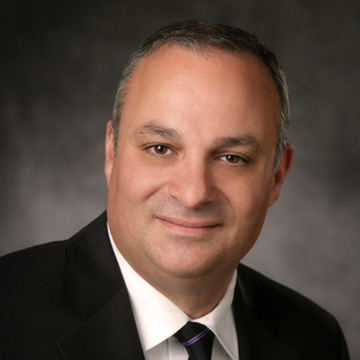Karen Coffman
Ten years ago, Karen Coffman was in terrible pain. It hurt to exercise, to ride her bike, to stand, to sit, even walking the aisles of the grocery store was excruciating. As a registered nurse and case manager at Rockford Memorial Health System (now MercyRockford), Karen was in constant motion all day so pain was certainly not an option.
Karen knew something had to be done, but the thought of a hip replacement in her late 40’s filled her with dread. Thankfully for Karen, she had “good bones” and a great doctor, Mark Barba MD, proficient in the Birmingham Hip Resurfacing procedure. “Basically, my joints had worn out,” said Karen. “I also had a bit of hip dysplasia and osteoarthritis runs in my family.
In 2007, hip resurfacing was a relatively new procedure, having been approved by the FDA using the Birmingham Hip Resurfacing (BHR) system in 2006. In hip resurfacing, the head of the thighbone or femoral head is not removed, but is instead trimmed and capped with a smooth metal covering. The damaged bone and cartilage within the socket is removed and replaced with a metal shell, just as in a traditional total hip replacement. In a traditional total hip replacement, the femora head and damaged socket are both removed and replaced with metal, plastic, or ceramic components. Hip resurfacing is not suitable for all patients. The best candidates for hip resurfacing are under 60 years old with strong, healthy bones. Although Karen is small and slender, she had very good bone density and was in otherwise excellent health. She was the perfect candidate for hip resurfacing. “Dr. Barba said I had large, solid bones for being such a small person,” said Karen.
Also in Karen’s favor – the fact that Dr. Barba was an early adopter of the procedure and had at that time already done more than 30 hip resurfacings. Karen felt confident that hip resurfacing was the better choice for her.
Pioneered by Orthopedic Surgeon Derek McMinn, MD, the Birmingham Hip Resurfacing procedure restores the natural shape of the joint giving patients better stability, longevity and higher levels of activity than a traditional hip replacement.
Deciding on hip resurfacing as an alternative was music to Karen’s ears, “A total hip replacement would have bummed me out,” she said. And while she was uncomfortable the first 10 days after surgery, the first time she stood up a few hours after post-op, she knew it was all good. “The pain was gone, I felt an immediate difference,” Karen said.
In 2015, Karen had hip resurfacing done on her other hip and while she knows she had to be careful about doing some activities she much preferred this type of procedure to a replacement.
“I haven’t roller or ice skated since my surgeries and I probably won’t,” Karen said. “But I have tried water skiing! “I can walk and jog on the treadmill and I walk a lot at the hospital – with no pain. I can also ride on the back of my husband’s Harley pain free! I could not do that before I had the hip resurfacing.”
Working in the medical field gave Karen an advantage when it came to knowing what to expect in going through procedures such as hip resurfacing. And she also recognized the exceptional care she received as an OrthoIllinois patient. “I’ve worked with OrthoIllinois physicians for years and now as a patient I’ve seen both sides of the organization,” Karen said. “They are certainly a well-oiled machine and wonderful to work with – as a nurse and as a patient.”


